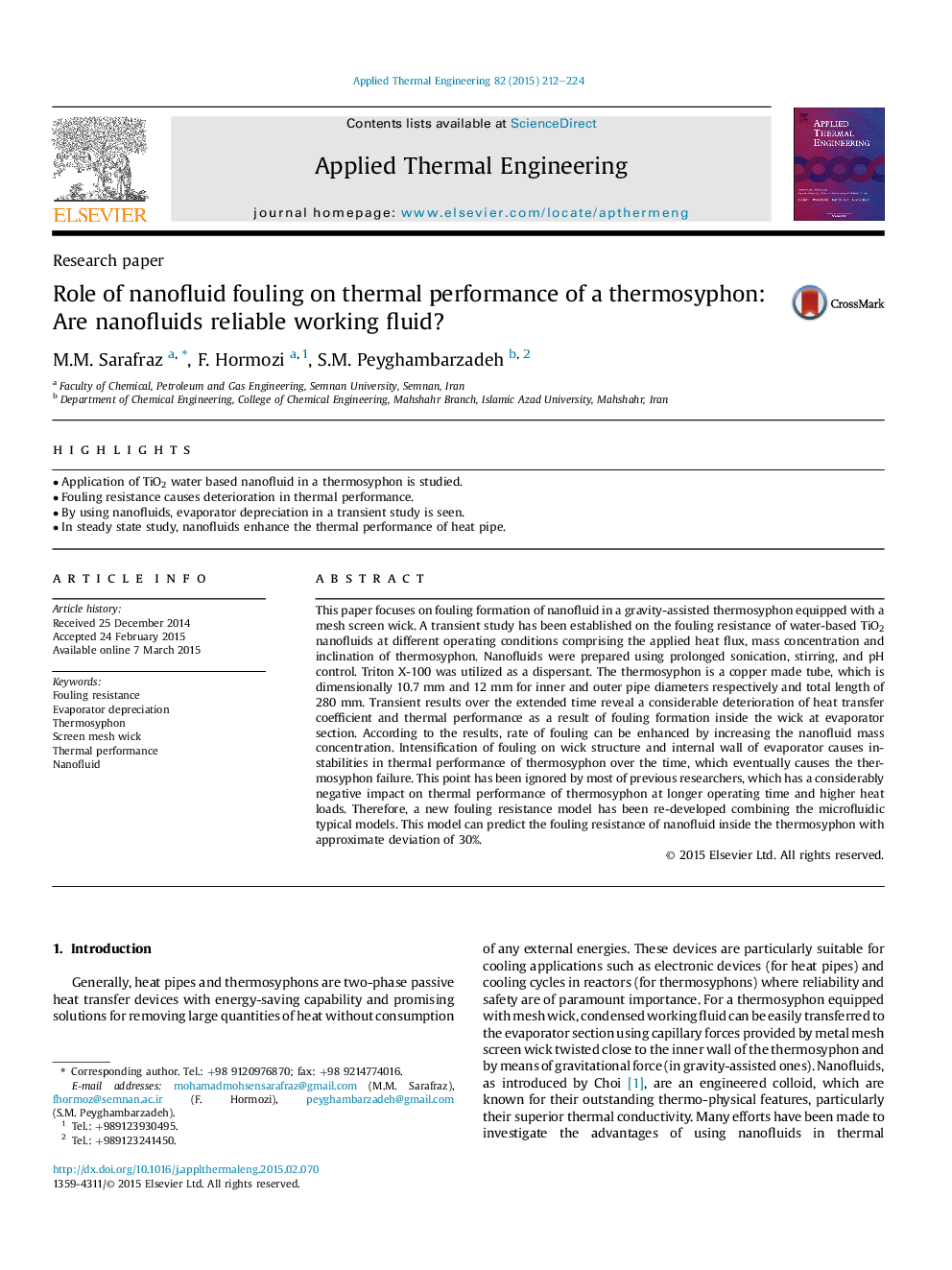| Article ID | Journal | Published Year | Pages | File Type |
|---|---|---|---|---|
| 645532 | Applied Thermal Engineering | 2015 | 13 Pages |
•Application of TiO2 water based nanofluid in a thermosyphon is studied.•Fouling resistance causes deterioration in thermal performance.•By using nanofluids, evaporator depreciation in a transient study is seen.•In steady state study, nanofluids enhance the thermal performance of heat pipe.
This paper focuses on fouling formation of nanofluid in a gravity-assisted thermosyphon equipped with a mesh screen wick. A transient study has been established on the fouling resistance of water-based TiO2 nanofluids at different operating conditions comprising the applied heat flux, mass concentration and inclination of thermosyphon. Nanofluids were prepared using prolonged sonication, stirring, and pH control. Triton X-100 was utilized as a dispersant. The thermosyphon is a copper made tube, which is dimensionally 10.7 mm and 12 mm for inner and outer pipe diameters respectively and total length of 280 mm. Transient results over the extended time reveal a considerable deterioration of heat transfer coefficient and thermal performance as a result of fouling formation inside the wick at evaporator section. According to the results, rate of fouling can be enhanced by increasing the nanofluid mass concentration. Intensification of fouling on wick structure and internal wall of evaporator causes instabilities in thermal performance of thermosyphon over the time, which eventually causes the thermosyphon failure. This point has been ignored by most of previous researchers, which has a considerably negative impact on thermal performance of thermosyphon at longer operating time and higher heat loads. Therefore, a new fouling resistance model has been re-developed combining the microfluidic typical models. This model can predict the fouling resistance of nanofluid inside the thermosyphon with approximate deviation of 30%.
